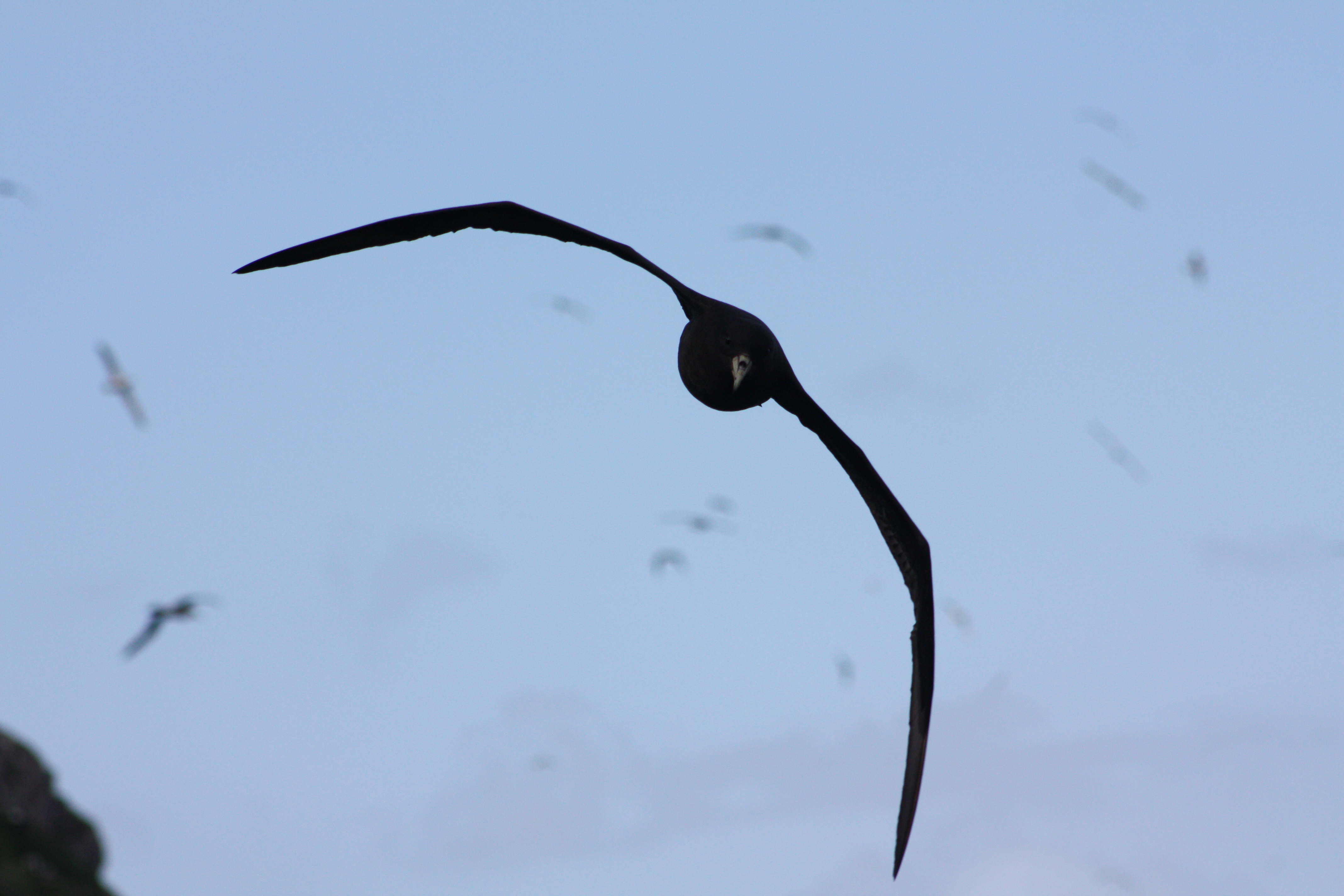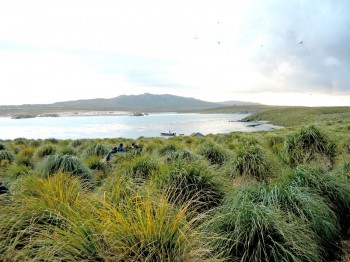
Falklands Conservation, with the help of volunteers, recently completed burrowing seabird surveys on two tussoc islands of the Falkland Islands (Islas Malvinas*) over the 2023/2024 breeding season.
The aim of the work is to inform the review of the Falkland Island Government’s Stanley Tussac Islands Management Plan 2018-2023. This will be done by establishing baseline estimates of population sizes of the Near-Threatened Sooty Shearwater Ardenna grisea and the Vulnerable White-chinned Petrel Procellaria aequinoctialis at these sites, and to assess population trends where previous data exists. This season, fieldwork involved assessing burrow density and occupancy rate of the two species on Kidney and Top islands. Monitoring of Bottom and Cochon islands is planned to take place over the 2024/2025 breeding season.
The survey was covered in a story by the national television broadcaster, Falkland Islands Television (FITV)
Falkland Conservation’s Seabird Ecologist, Amanda Kuepfer, led the survey and explained why the work is so important: “These islands represent nationally important breeding sites for these species - Kidney is the largest breeding colony of sooties [Sooty Shearwaters] in the Falklands, and Kidney, Top and Bottom islands represent three of the four known breeding sites for white-chins [White-chinned Petrels] in the Falklands. Given pressures such as from changing climate, predation from invasives and fisheries bycatch, there is a real risk of local extinction of white-chins in the Falklands, and so understanding population trends at these sites is critical.”
 The tussoc-covered landscape of Kidney Island, where Sooty Shearwaters and White-chinned Petrels make their burrows; photograph by Sarah Crofts
The tussoc-covered landscape of Kidney Island, where Sooty Shearwaters and White-chinned Petrels make their burrows; photograph by Sarah Crofts
Future surveys could involve the help of a detection dog trained to undertake burrowing seabird monitoring work, potentially making this notoriously difficult work a little easier. Falklands Conservation are currently liaising with 2023 ACAP Secondee, Naomi Cordeiro of South Atlantic Detection Dogs, to see what the most effective use of detection dogs with monitoring petrels might be with Naomi and detection dog in training, Missy, joined a survey in December last year to help understand how the use of a detection dog might fit with future monitoring.
Falklands Conservation are now in the process of analysing the data from this year’s surveys and hope to be able to share the results in July.
15 April 2024
*A dispute exists between the Governments of Argentina and the United Kingdom of Great Britain and Northern Ireland concerning sovereignty over the Falkland Islands (Islas Malvinas), South Georgia and the South Sandwich Islands (Islas Georgias del Sur y Islas Sandwich del Sur) and the surrounding maritime areas.

 English
English  Français
Français  Español
Español